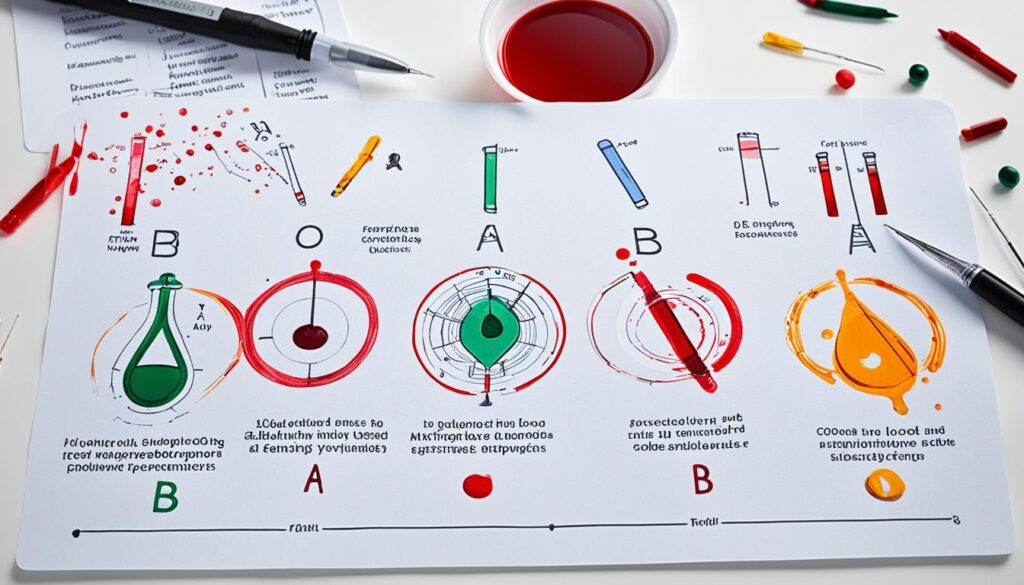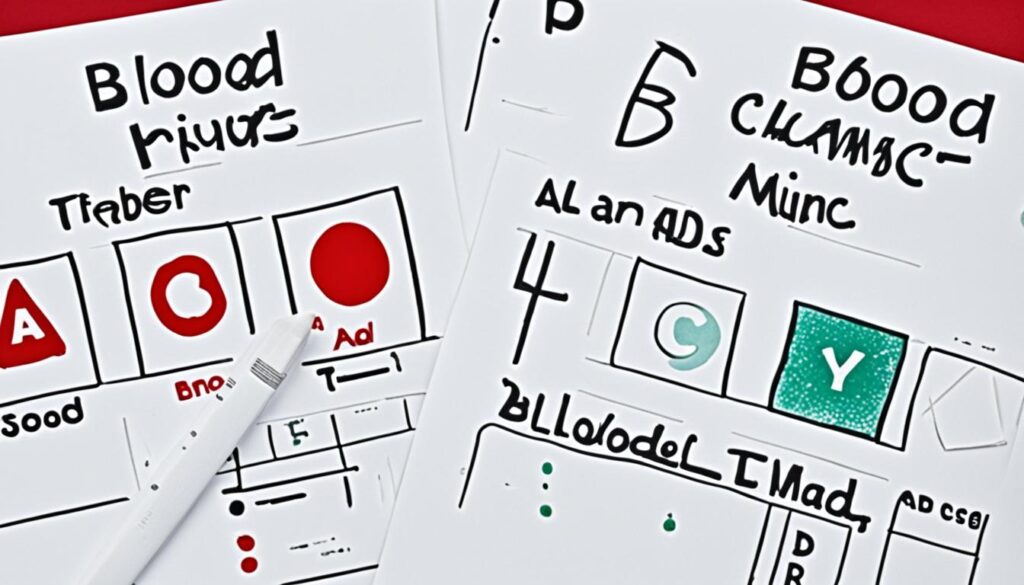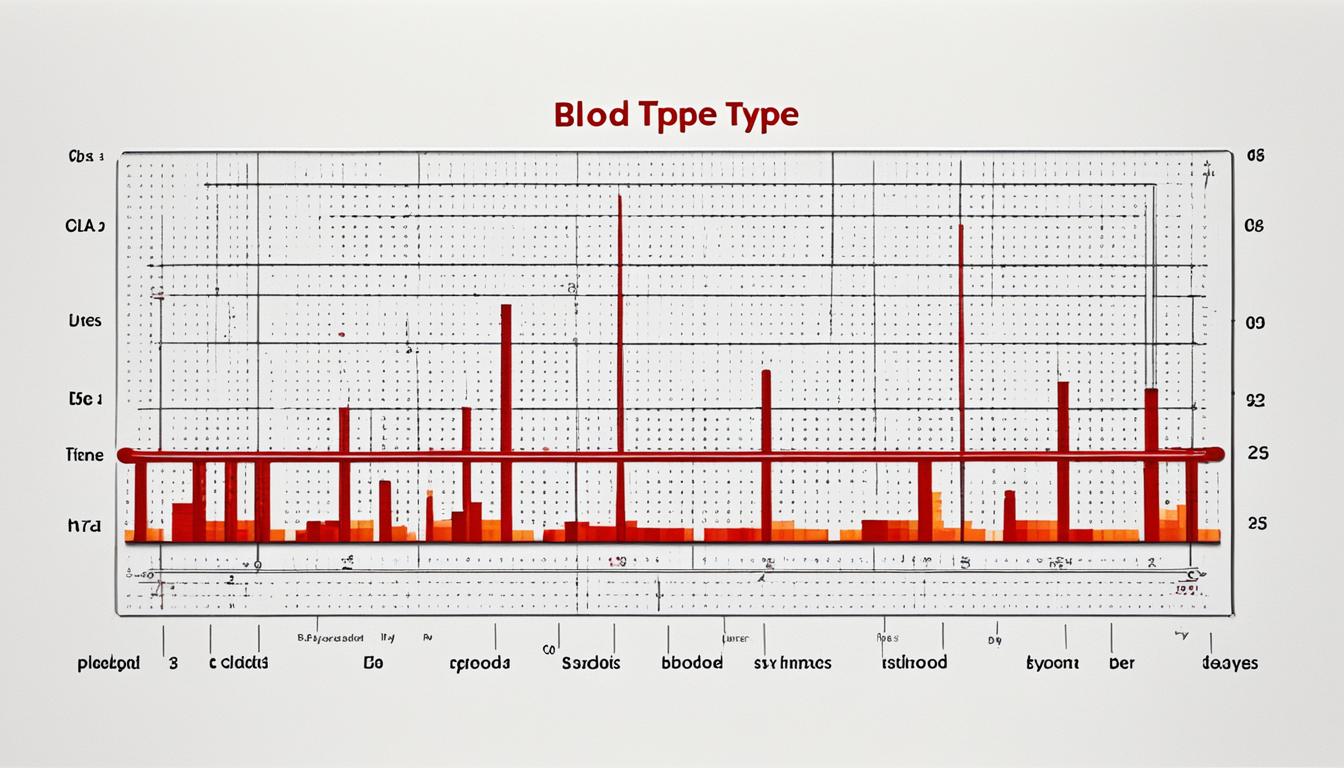Did you know that only 38.5% of the U.S. population has the most common blood type, O-positive? The sheer diversity of human blood types is truly remarkable, with over 8 distinct combinations of major blood groups and Rh factors. Unraveling the intricacies of this sanguine symphony is essential for safe medical care and transfusions. In this visual guide, we’ll explore the fascinating world of blood typing, uncovering the hidden patterns and compatibility charts that can save lives.
Blood types are determined by the presence or absence of certain antigens on the surface of red blood cells. There are four major blood groups (A, B, AB, and O) and an Rh factor (positive or negative) that create the 8 most common blood types. Knowing your blood type is critical for safe blood transfusions, as certain blood types must be matched to avoid potentially deadly reactions.
The Importance of Blood Typing
Understanding your blood type is crucial for various medical scenarios, from transfusion safety to pregnancy planning. Blood types are determined by the presence or absence of two blood type antigens – A and B – on the surface of red blood cells. This, combined with the Rh factor (positive or negative), creates the 8 most common blood type classifications.
Knowing your blood type is vital for ensuring safe transfusions, as receiving the wrong type can trigger a life-threatening immune response. It’s also important during pregnancy, as the mother’s Rh factor can impact the baby’s development. Additionally, blood type inheritance patterns play a role in family planning and organ/tissue donation.
How Blood Type Is Determined
The A and B antigens, along with the Rh factor, determine an individual’s blood type. Someone with type A blood has the A antigen, type B has the B antigen, type AB has both, and type O has neither. The Rh factor can be positive (+) or negative (-), creating the 8 main blood type classifications.
Why Knowing Your Blood Type Matters
Identifying your blood type is crucial for medical emergencies, as the wrong type can cause dangerous transfusion reactions. It’s also essential for pregnancy planning, as the mother’s Rh factor can impact the baby’s development. Furthermore, blood type information is vital for organ and tissue donation, ensuring the best possible transfusion safety and compatibility.

Exploring the Blood Type Chart
Understanding the intricate world of blood types is crucial for medical professionals and individuals alike. At the heart of this knowledge lies the blood type chart, which categorizes the four major blood groups: A, B, AB, and O. These groups are determined by the presence or absence of specific blood group antigens on the surface of red blood cells.
The Four Major Blood Groups
The A and B blood groups are defined by the presence of A or B antigens, respectively, while the O group lacks both A and B antigens. The AB group is unique, as it possesses both A and B antigens. These fundamental differences in blood group classification play a vital role in blood type compatibility and transfusion safety.
The Rh Factor and Positive/Negative Types
In addition to the primary blood groups, the Rh factor also plays a crucial role in blood type identification. This factor is determined by the presence or absence of the Rh antigen on the red blood cells. Individuals can be either Rh positive (Rh+) or Rh negative (Rh-), resulting in a total of 8 common blood types: A+, A-, B+, B-, AB+, AB-, O+, and O-.
Understanding the nuances of the blood type chart and how these different blood groups interact is essential for ensuring safe and successful medical procedures, such as blood transfusions and organ transplants.

blood type graph: Visualizing Blood Group Compatibility
Understanding blood type compatibility is crucial for safe and successful transfusions. The blood type compatibility graph provides a visual guide to determine which blood types can safely donate to and receive from others. This tool is essential for healthcare professionals and patients alike, ensuring proper matching and mitigating the risks associated with incompatible blood type combinations.
Transfusion Safety and Matching Guidelines
When it comes to transfusions, certain blood types are considered universal donors or recipients. Individuals with type O- blood are universal donors, meaning their red blood cells can be given to patients of any blood type without risk of adverse reactions. Conversely, those with type AB+ blood are universal recipients, able to receive donations from any blood type.
Interactive Blood Type Compatibility Chart
To further simplify the process of visualizing blood type compatibility, many healthcare facilities offer an interactive blood type compatibility chart. These user-friendly tools allow patients and medical professionals to easily identify which blood types are compatible, ensuring safer and more informed decisions during transfusions and other medical procedures involving blood transfer.
By understanding the blood type compatibility graph and utilizing interactive charts, healthcare providers can make informed decisions and minimize the risks associated with incompatible blood type matches. This knowledge ultimately leads to improved patient outcomes and enhanced transfusion safety.
The Rarity of Blood Types
While the four major blood groups (A, B, AB, and O) and the Rh factor (positive or negative) account for the vast majority of the population, the world of blood types is far more diverse than many realize. There are over 600 known blood type antigens that can create rare blood types, found more frequently in certain ethnic and racial groups.
Understanding Rare Blood Types
These rare blood types are not only fascinating from a scientific perspective, but also critical for ensuring an adequate blood supply and meeting the needs of patients who require specialized blood donations. Individuals with rare blood types may have unique combinations of antigens that make finding compatible donors a challenge.
Ethnic and Racial Diversity in Blood Types
The distribution of blood types can vary significantly based on an individual’s ethnic and racial background. For example, individuals of African descent are more likely to have the Duffy-negative blood type, while those of Asian descent are more likely to have the Bombay blood type. Understanding these blood type demographics is essential for healthcare providers to effectively manage blood banks and ensure patients receive the most appropriate and compatible transfusions.
Conclusion
Understanding your blood type is a crucial aspect of personal health and well-being. The visual guide presented in this article has provided a comprehensive overview of the different blood groups, the Rh factor, and the importance of blood type compatibility. By knowing your blood type, you can take proactive steps to ensure your safety during medical procedures, such as blood transfusions and organ/tissue donations.
Donating blood is not only a selfless act but also a vital contribution to maintaining a diverse and readily available blood supply. By sharing your knowledge about blood types, you can encourage others to become blood donors and help save lives. Remember, the more people who are aware of their blood type and its significance, the better equipped the healthcare system will be to provide the necessary medical care.
In conclusion, the knowledge gained from this article will empower you to make informed decisions about your health and play a role in supporting the critical need for blood donations. Embrace your understanding of blood types, and use this information to contribute to a healthier and more resilient community.

